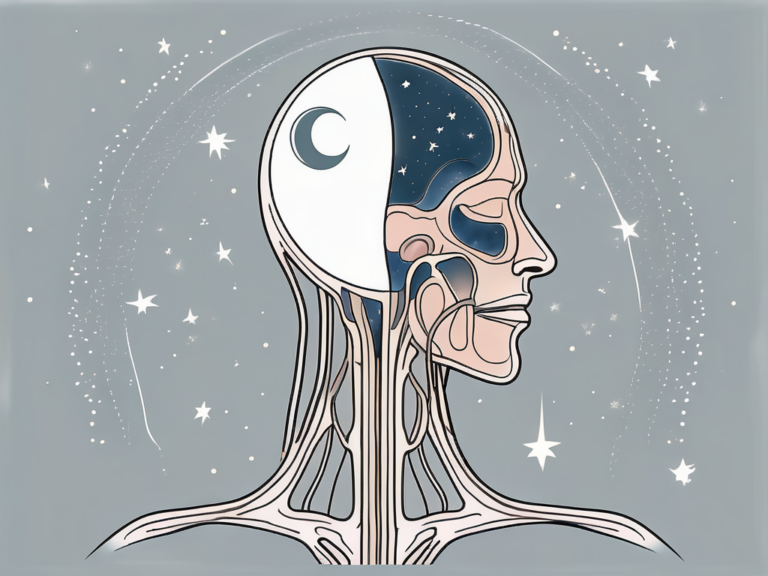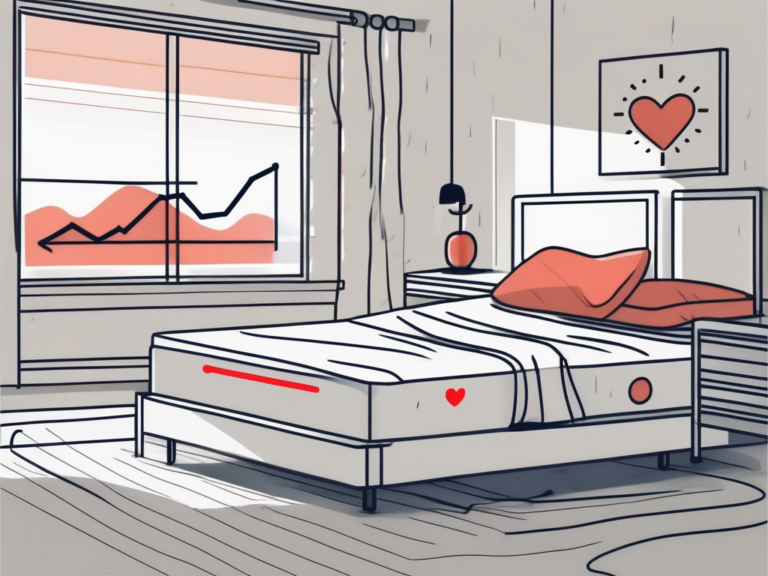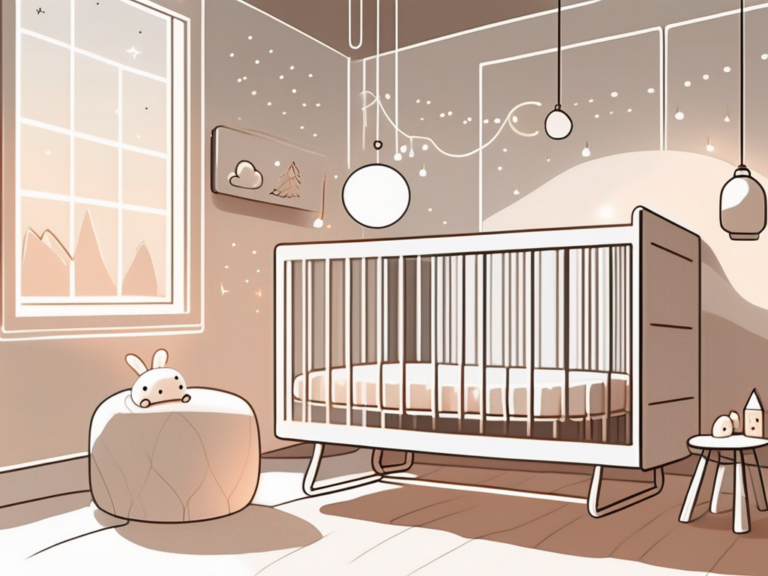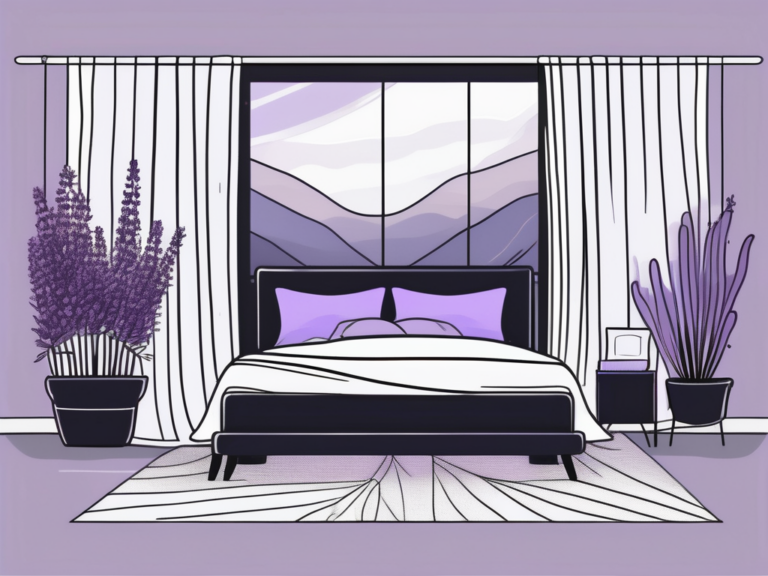Oculo Motor Nerve and Sleeping
Have you ever wondered about the connection between your ability to move your eyes and a good night’s sleep? It might surprise you to learn that the oculo motor nerve, a key player in eye movement, actually has a fascinating relationship with sleep. In this article, we will explore the anatomy and functions of the oculo motor nerve, its role in eye movement, and how sleep affects this intricate system. We will also delve into common disorders related to the oculo motor nerve and sleep, as well as potential treatments and management strategies. So, let’s dive into the world of the oculo motor nerve and sleeping!
Understanding the Oculo Motor Nerve
Before we can fully grasp the impact of sleep on the oculo motor nerve, let’s first understand its anatomy and functions. The oculo motor nerve, also known as cranial nerve III, is one of twelve cranial nerves originating from the brainstem. It controls the movement of certain eye muscles and is responsible for various eye movements, such as elevation, depression, and rotation.
Anatomy of the Oculo Motor Nerve
The oculo motor nerve originates from the midbrain and contains both motor and parasympathetic fibers. It transmits signals to the muscles that control eye movement, including the superior rectus, inferior rectus, medial rectus, and inferior oblique muscles. Additionally, it carries parasympathetic fibers to control pupil size and the constriction of the eye’s ciliary muscle.
Within the midbrain, the oculo motor nerve emerges from the interpeduncular fossa, a small depression located between the cerebral peduncles. From there, it travels through the cavernous sinus, a complex network of veins and nerves, before reaching the orbit of the eye. As it enters the orbit, the oculo motor nerve divides into several branches, each supplying specific eye muscles.
Functions of the Oculo Motor Nerve
The primary function of the oculo motor nerve is to coordinate eye movements, allowing our eyes to track objects, change focus, and maintain proper alignment. Without the oculo motor nerve, our eyes would be unable to smoothly move in unison, impairing our ability to perceive depth, accurately follow moving objects, and shift our gaze from one point of interest to another.
Aside from eye movement control, the oculo motor nerve also plays a crucial role in pupil dilation and eye lid movement. Pupil dilation allows more light to enter the eye, while eye lid movement helps protect the eye from foreign particles and excessive light.
Furthermore, the oculo motor nerve is responsible for a fascinating phenomenon known as the pupillary light reflex. When light enters the eye, it stimulates specialized cells in the retina called photoreceptors. These photoreceptors send signals to the oculo motor nerve, which in turn causes the pupil to constrict, reducing the amount of light entering the eye. This reflexive action helps to regulate the amount of light reaching the retina, ensuring optimal vision in various lighting conditions.
In addition to its role in eye movements and pupillary reflexes, the oculo motor nerve also contributes to the control of eye position during sleep. During the rapid eye movement (REM) stage of sleep, which is associated with vivid dreaming, the oculo motor nerve remains active. This activity is believed to be responsible for the rapid and random eye movements that occur during REM sleep. These eye movements may be linked to the processing of visual information during dreams, as well as the coordination of eye movements with the dream content.
The Role of the Oculo Motor Nerve in Eye Movement
Now that we understand the basics of the oculo motor nerve, let’s explore how it contributes to our ability to move our eyes. The coordination of eye movements involves the interaction of several cranial nerves, including the oculo motor nerve, as well as precise signaling and control within the brain.
The oculo motor nerve, also known as the third cranial nerve, plays a crucial role in controlling the movement of the eye muscles. It originates from the midbrain and innervates four of the six extraocular muscles responsible for eye movement: the superior rectus, inferior rectus, medial rectus, and inferior oblique muscles. These muscles work together to allow for smooth and coordinated eye movements in various directions.
Connection Between the Oculo Motor Nerve and Pupil Dilation
One aspect of eye movement controlled by the oculo motor nerve is the regulation of pupil size through the opening and closing of the iris. The parasympathetic fibers of the oculo motor nerve stimulate the constriction of the iris and reduce the diameter of the pupil. This mechanism helps protect the retina from excessive light and optimizes visual acuity.
Moreover, the oculo motor nerve is also involved in the pupillary light reflex, which is the constriction of the pupil in response to bright light. This reflex is essential for adjusting the amount of light that enters the eye, ensuring that the visual system functions effectively in various lighting conditions.
Oculo Motor Nerve’s Impact on Eye Lid Movement
In addition to pupil dilation, the oculo motor nerve also controls the movement of the upper eyelid. This enables our eyes to blink and protects them from dryness, dust, and other foreign objects. The intricate coordination between the oculo motor nerve and other cranial nerves ensures that our eyelids close properly, maintaining eye health and function.
Furthermore, the oculo motor nerve is responsible for coordinating the movement of the levator palpebrae superioris muscle, which elevates the upper eyelid. This muscle works in conjunction with the orbicularis oculi muscle to facilitate the complex motion of blinking, which helps spread tears across the surface of the eye and keep it moist and nourished.
Sleep and its Impact on the Oculo Motor Nerve
Now, let’s shift our focus to the fascinating relationship between sleep and the oculo motor nerve. Sleep is a complex physiological process consisting of different stages, each with distinct patterns of brain activity and characteristic eye movements.
But what exactly happens during these sleep stages? Let’s delve deeper into the intricate dance between sleep and eye movement.
Sleep Stages and Eye Movement
During sleep, we go through several sleep stages, including deep sleep (non-rapid eye movement, or NREM) and rapid eye movement (REM) sleep. NREM sleep is associated with slow brain waves and minimal eye movement. It is a time of restoration and rejuvenation, where our bodies repair themselves and consolidate memories.
On the other hand, REM sleep is characterized by rapid eye movements and vivid dreaming. These eye movements are orchestrated by the oculo motor nerve, allowing our eyes to move freely within the closed eyelids, resembling the awake state. It’s almost as if our eyes are exploring the dreamscapes that unfold in our minds.
The Effect of Sleep Deprivation on the Oculo Motor Nerve
Depriving ourselves of sufficient sleep can have detrimental effects on our overall health, including impacts on the oculo motor nerve. It’s like throwing a wrench into the delicate machinery of our eyes.
Studies have shown that sleep deprivation can disrupt the normal functioning of the oculo motor nerve, leading to issues such as impaired eye movement coordination and slower response times. The consequences of a restless night can manifest in various ways, affecting our ability to navigate the visual world around us.
When we don’t get enough sleep, our eyes may struggle to track objects smoothly and maintain accurate focus. It’s as if the gears of our eye movement control system are grinding against each other, causing a jerky and unsteady gaze. This can result in difficulties reading, driving, and performing other visually demanding tasks. The world becomes a blur, and our eyes become weary travelers on an uncertain path.
But the impact of sleep deprivation on the oculo motor nerve doesn’t stop there. It also affects the brain’s ability to process visual information efficiently. The once seamless integration of visual stimuli becomes fragmented, like a jigsaw puzzle missing crucial pieces. This further compromises eye movement control, making it even more challenging to navigate the visual landscape.
So, the next time you find yourself sacrificing sleep for other pursuits, remember the intricate dance between sleep and the oculo motor nerve. Take a moment to appreciate the wonders of a good night’s rest and the vital role it plays in keeping our eyes moving smoothly and our vision sharp.
Disorders Related to the Oculo Motor Nerve and Sleep
Now that we have explored the connection between the oculo motor nerve and sleep, let’s delve into common disorders that can impact this intricate system.
Oculo Motor Nerve Palsy and Sleep
Oculo motor nerve palsy occurs when there is damage or dysfunction of the oculo motor nerve. This can lead to various symptoms, including ptosis (drooping eyelid), limited eye movement, and double vision. While oculo motor nerve palsy can be caused by various factors, sleep-related disorders and sleep disturbances can exacerbate these symptoms, making eye movement control and coordination even more challenging.
Furthermore, individuals with oculo motor nerve palsy may experience difficulties in achieving restful sleep due to the discomfort caused by the condition. The inability to fully close the eyelids, a common symptom of oculo motor nerve palsy, can lead to dry eyes and increased sensitivity to light, making it harder to fall and stay asleep.
Sleep Apnea and the Oculo Motor Nerve
Another sleep-related disorder that can impact the oculo motor nerve is sleep apnea. Sleep apnea is characterized by pauses in breathing during sleep, resulting in fragmented sleep patterns. These interruptions can disrupt the normal functioning of the oculo motor nerve, leading to issues with eye movement coordination and a higher risk of developing oculo motor nerve palsy.
In addition to affecting the oculo motor nerve, sleep apnea can also contribute to the development of other eye-related conditions such as papilledema, a condition characterized by optic disc swelling due to increased intracranial pressure. The combination of sleep apnea and oculo motor nerve dysfunction can create a challenging situation for individuals, impacting both their sleep quality and overall eye health.
Treatment and Management of Oculo Motor Nerve Disorders
When it comes to addressing oculo motor nerve disorders, a comprehensive approach is often necessary. Treatment options can vary depending on the specific condition and its underlying cause. It is crucial to engage with medical professionals experienced in treating oculo motor nerve disorders to develop an individualized plan.
Therapeutic Approaches for Oculo Motor Nerve Palsy
For individuals diagnosed with oculo motor nerve palsy, treatment options may include eye exercises to strengthen and coordinate eye muscles, prism glasses to alleviate double vision, and, in severe cases, surgery to correct muscle imbalances. These interventions aim to improve eye movement coordination and restore optimal visual functioning.
Sleep Hygiene for Optimal Oculo Motor Nerve Health
When it comes to maintaining a healthy oculo motor nerve and ensuring optimal eye movement control, sleep hygiene plays a crucial role. Sleep hygiene refers to practices and habits that promote good sleep quality. Adopting a consistent sleep schedule, creating a relaxing sleep environment, and avoiding stimulants like caffeine and electronic devices before bed can all contribute to a better night’s sleep and support the well-being of the oculo motor nerve.
Furthermore, it is important to note that certain lifestyle factors can also impact the health of the oculo motor nerve. Regular exercise, a balanced diet rich in nutrients, and minimizing stress levels can all contribute to the overall well-being of the oculo motor nerve. Engaging in activities that promote eye health, such as wearing protective eyewear when necessary and taking regular breaks from screen time, can also help maintain the optimal functioning of this intricate system.
In conclusion, the oculo motor nerve, responsible for eye movement coordination and control, has an intriguing relationship with sleep. Understanding the anatomy and functions of the oculo motor nerve, its impact on eye movement, and how sleep affects this intricate system can shed light on the importance of sleep for maintaining optimal visual health. By recognizing and addressing disorders related to the oculo motor nerve and sleep, and implementing appropriate treatment and management strategies, we can empower ourselves to support the health and functionality of this vital component of our visual system.






